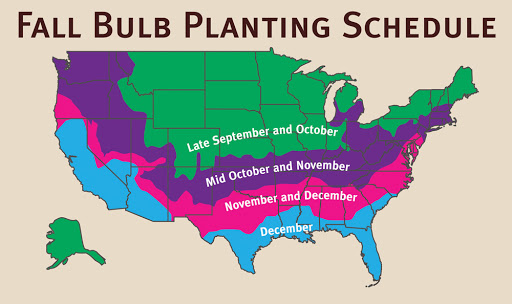Over 100,000 daffodil bulbs have been planted in the City of White Plains since 2014 when White Plains Beautification Foundation started The Daffodil Project. With the expertise of Walter & Chris Ruigrok from A.D.R. Bulbs our public spaces have dazzled with daffodils. A.D.R. offers a wonderful range of choices and excellent quality bulbs at competitive pricing, and supported by excellent customer service. WPBF values its long-standing relationship with A.D.R. Bulbs.
Joanna Daddario
, White Plains Beautification Foundation
« Previous Plant | Next Plant »
Tulipa Fringed 'Labrador
Tulip
Labrador is a fringed tulip with deep maroon-black petals that age to a red-wine hue. The heavily fringed flowers can span up to 4 inches across, standing 18 to 20 inches tall. Blooming in mid to late spring, this variety thrives in full sun to partial shade and is well-suited for containers, borders, and cut flower arrangements.
Tulipa Calculator
When should I plant Tulipa Fringed 'Labrador?

Growing and Maintenance Tips for Tulipa Fringed 'Labrador
Planting: Plant in fall once soil temperatures fall below 55°F. Set bulbs 6–8 inches deep with the pointed end facing up. Fringed tulips appreciate a sunny, protected site that showcases their refined, serrated petal edges.
Spacing: Space bulbs 4–6 inches apart. For maximum impact, plant in groups of 10 or more to emphasize their intricate textures and luminous, often bi-colored blooms.
Light: Full sun yields the best color and stem strength. While they tolerate light shade, sunlight enhances the clarity and sparkle of their fringed edges.
Soil: Use well-drained, neutral to slightly acidic soil (pH 6–7). Avoid soggy spots—good drainage is essential to maintain bulb health and flower form.
Watering: Water after planting to settle the bulbs. In spring, water during prolonged dry spells but never allow the soil to remain soggy—excess moisture may damage flower integrity.
Temperature & Dormancy: Requires 12–16 weeks of cold (below 50°F) to promote healthy root development and flowering.
Fertilization: Apply a balanced bulb fertilizer at planting and again in spring when foliage emerges. This supports strong stems and crisp fringe detail in the blooms.
Pests: Generally low-maintenance. Mulch or mesh helps deter squirrels. Deer will eat buds and emerging foliage—especially in early spring—so use repellents or fencing in vulnerable areas.
Disease: To avoid Botrytis (Tulip Fire), plant only firm, healthy bulbs in sunny, well-ventilated beds. Avoid overhead watering. Remove and discard any infected plant material—do not compost it. Rotate planting sites annually and avoid replanting in affected areas for at least three years.
Plant Characteristics
Additional Information
| Height | 20 Inches |
| Spread | 2-4 Inches |
| Spacing | 4-6 Inches |
| Hardiness Zone | 3-8 |
| Color |
Black |





Check back soon for additional details.